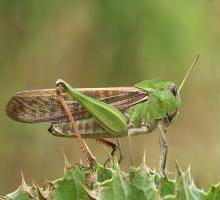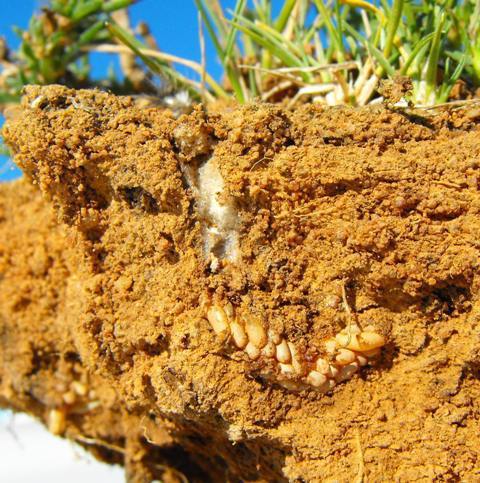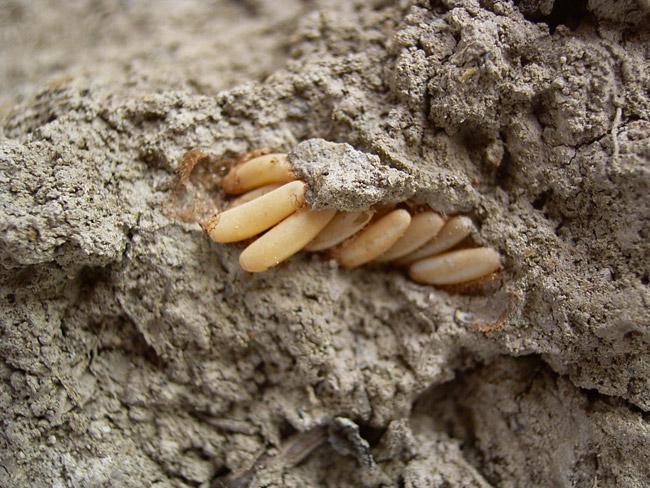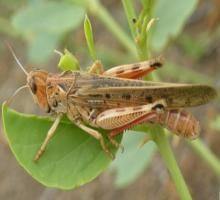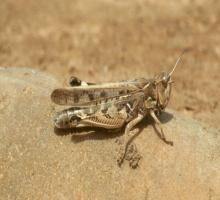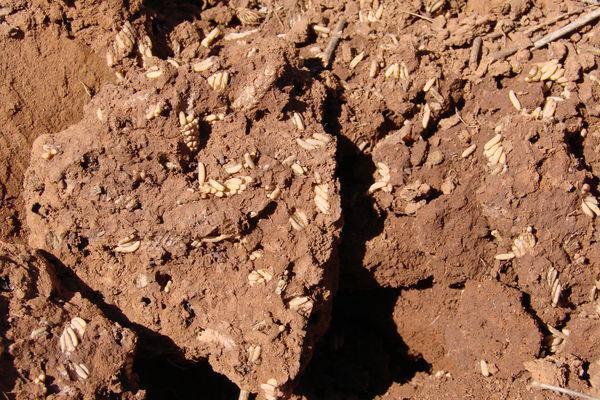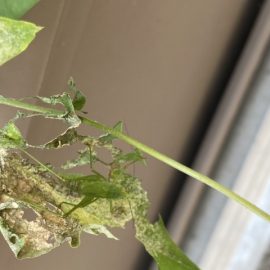Locusts – pest management
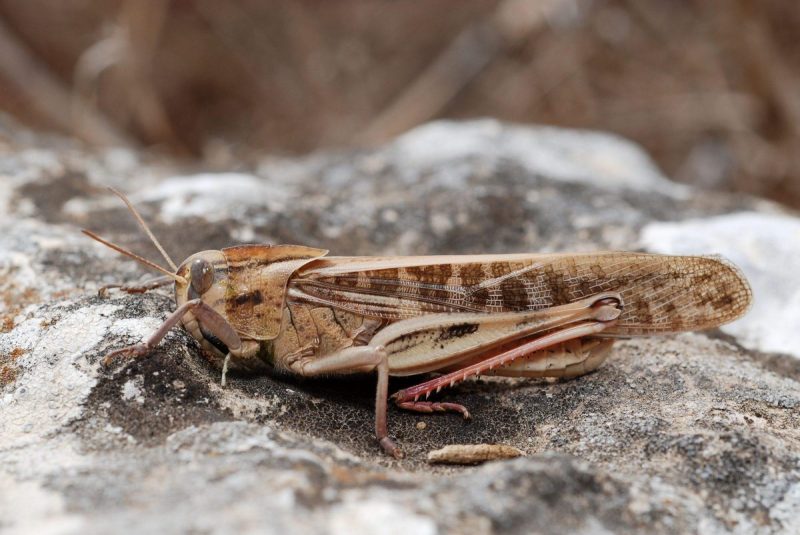
The most common species of locusts are:
1. The migratory locust – Locusta migratoria
Distribution. It is a species widespread in Europe, Central Africa, the island of Madagascar, Central and Southeast Asia, Australia.
Description. The adult has a green-gray body, with dark spots on the head and skin, and the body length varies, depending on the shape of the species, between 30-55 mm. The egg is 5-7 mm long, reddish-yellow. The oothecae are cylindrical, slightly curved, 50-70 mm long, and contain 50-100 eggs, arranged in rows of 4 eggs each. The larva goes through different larval stages and has a body of 7-10 mm and up to 30-40 mm in length.
Life cycle. The migratory locust produces only one generation per year and overwinters in the egg stage. The eggs are laid in the ground, in oothecae, in autumn, at different depths. In spring, the larvae begin to hatch in the second decade of May, when the soil temperature reaches 19-21° C, and the air temperature is 14-15° C. Locust migration takes place during hot days, with temperatures of 21-23° C. The females lay 200-300 eggs, in 3-5 oothecae, in sandy soils, the depth being between 3 and 6 cm. During the invasion, the formation of a large number of locusts is caused by temperature, light, wind, and food. This mass migration is a result of excessive reproduction, which usually occurs only in favorable years. It occurs especially in hot years and dry springs, followed by hot and dry summers.
Crop damages. These locusts have a polyphagous species. It prefers reeds, cereals, beets, clovers, sunflowers, grasses, etc. It attacks the aerial parts of the plants and during the invasions, it can destroy crops, leaving untouched only the stems that are thicker and stronger. The biggest damages are produced in the areas with reeds and corn.
Pest management. For control, it is recommended to carry out treatments with specific insecticides.
2. The Moroccan locust – Dociostaurus maroccanus
Distribution. It is a species commonly found in Southern Europe and it is less prevalent in Central Europe.
Description. The adult has a pale, reddish-gray body with dark spots. The male has a length of 17-28 mm, and the female of 25-400 mm. The eggs are laid in a cylindrical ootheca, which is generally slightly curved and 12-18 mm long. The larva in the early ages is 5-10 mm long and colored in dark brown.
Life cycle. It produces one generation per year and overwinters in the egg stage, laid in the oothecae. IIn spring, the larvae begin to hatch in late April, appearing in stages until the second decade of May.
Crop damage. These locusts have a phytophagous trophic diet and feed on cultivated and spontaneous green plants: cereals (wheat, corn), alfalfa, clover, vegetables, technical plants (beets, tobacco), etc.
Pest management. Treatments must be applied with specific insecticides.














































































































































































































































































































































































































































